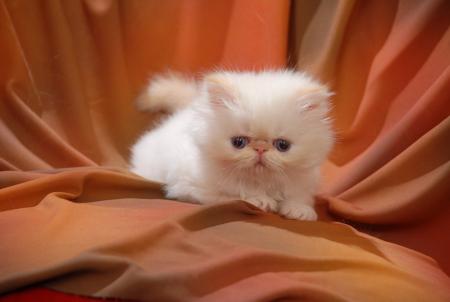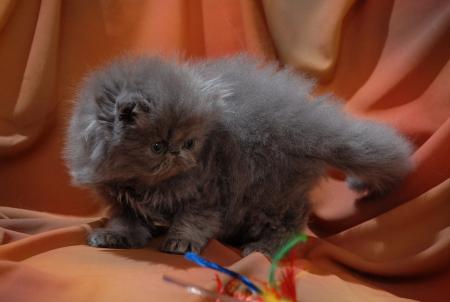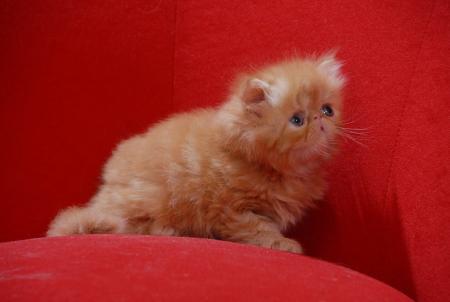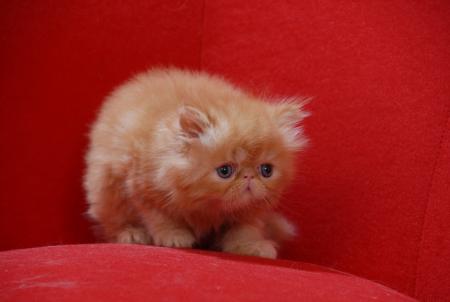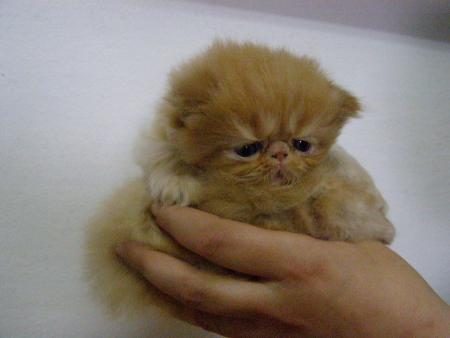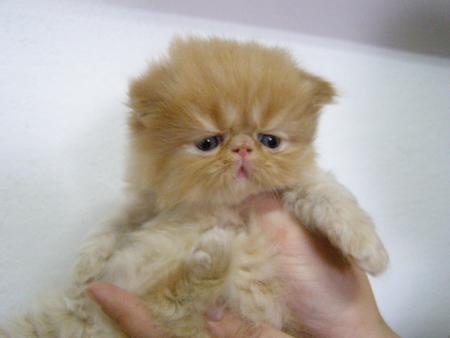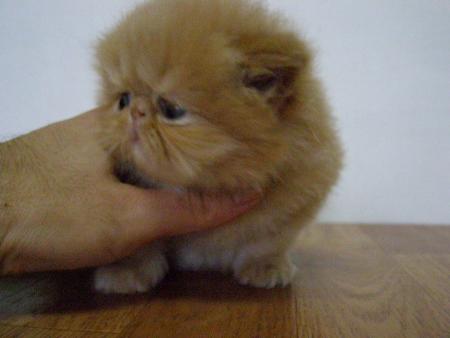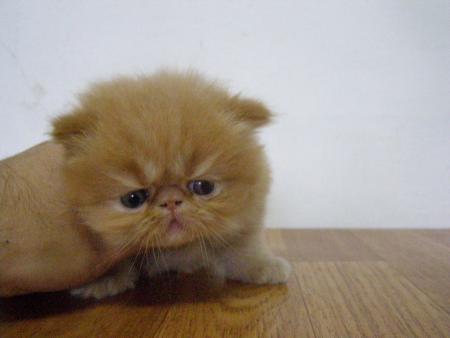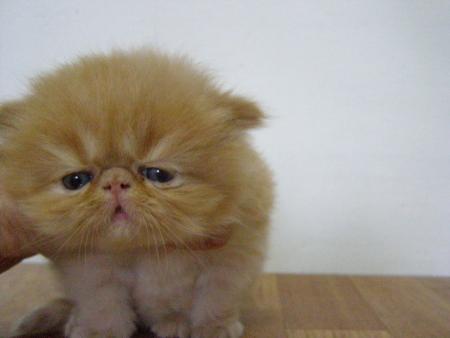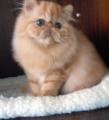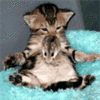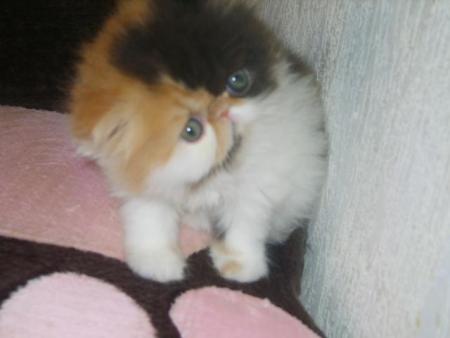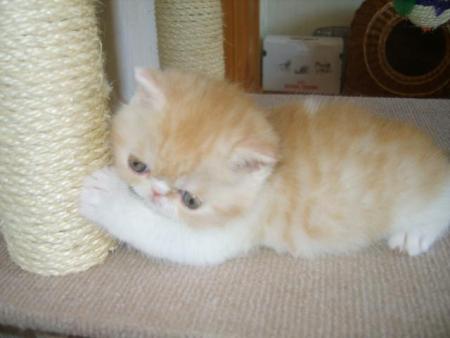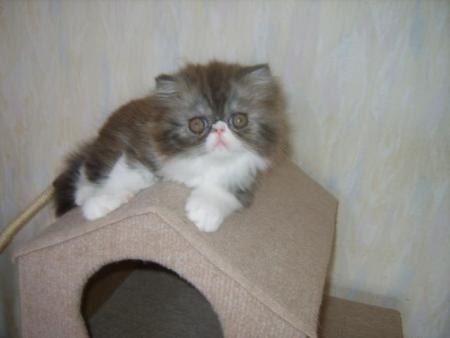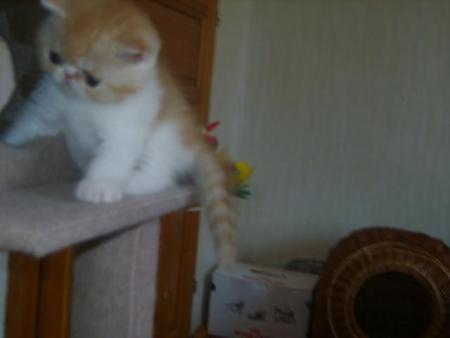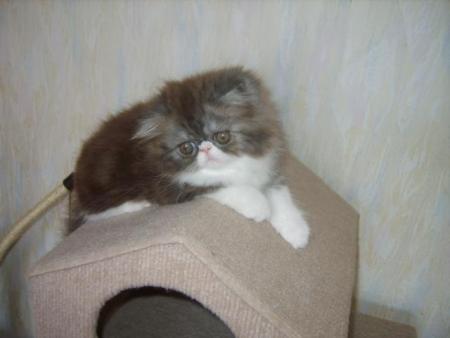Фантик, честити внучета - прекрасни са, особено синьото!

Аз много харесвам котките с дилут-ген! Пожелавам им да бъдат много обичани и глезени от стопаните си.
Абсолютно си прав относно наситеността на цвета на очите при кълърпойнтите, както и за обстоятелството, че чинчилите много трудно покриват стандарта (по отношение на носа), за разлика от другите персийци. При чинчилите това е дилемата между привържениците на кълърбрийдинга и тези, които кръстосват чинчили с персийци с други цветове. При кълърбрийдинга е много трудно да се получи носа на другите персийци, а при кръстосването с табита, както ти пишеш, после трябва да се работи по поправката на цвета на очите и на козината, евентуално.
Във уебстраницата на любителите на силвърите и голдъните попаднах на една много интересна статия от собственичката на развъдник Диадем - Джанис Рейчл, която е посветена на историческото развитие на чинчилите още от знаменитата Чини, родена 1882. В статията има един много интересен абзац, в който тя зачеква въпроса за стандарта на персийските котки в частта му относно носа, като "реабилитира", ако мога така да се изразя, чинчилите.
Ето въпросния пасаж от статията на Джанис Рейчл на английски, за което предварително се извинявам, предвид, че във форума се пише на български, но ми се струва интересен.
Цитат
The Look The 1950s, '60s, and '70s produced many beautiful and very competitive silvers, no different from Persians of other colors in type. Judging by the CFA Yearbooks, it was by the late 1970s that blacks had developed a different "look" and shorter noses than some other colors; however, the silvers were as good or better than the whites shown at the time. Silver breeders were breeding selectively to improve and set type. When compared to some of the other colors, silvers improved more quickly in doming, tophead, and ear size. Unfortunately, this selective breeding further limited the already small gene pool. From time to time, some breeders talked about the possibility of a "different" standard for Silver and Golden Persians; however, most feel that good silvers and goldens meet the standard as it is written. It has not been the standard or the cat at fault, but more likely the way the standard has been interpreted over the years. Sometimes we hear a cat praised for having "no nose." The standard calls for "a short nose"; how short is not defined, but it does not say "no nose!" It describes a "break," but does not specify how deep the break should be. What is far more specific in the standard is the location of the break, described as "centered between the eyes." Until the standard becomes more specific, silvers and goldens should not be penalized for not having noses as short, nor breaks as deep, as some Persians of other colors. During a discussion while judging silvers, one judge stated his opinion that silvers (and goldens) should have a nose "as broad as it is long." This meets the description in the standard for a "broad" nose, as well as contributing to the overall balance of the cat. While silvers and goldens may not have noses as short as some Persians of other colors, they have met the criteria of "as short as it is broad," and they are more likely to excel in round doming and small, well-set ears. Their skulls have been smooth and round, without the ridges and flatness often found in Persians of other colors.
 anabel10, в Jul 15 2009, 02:31 PM, написа:
anabel10, в Jul 15 2009, 02:31 PM, написа:

 Вход
Вход Регистрация
Регистрация Помощ
Помощ






 Горе
Горе Цитиране +
Цитиране +
